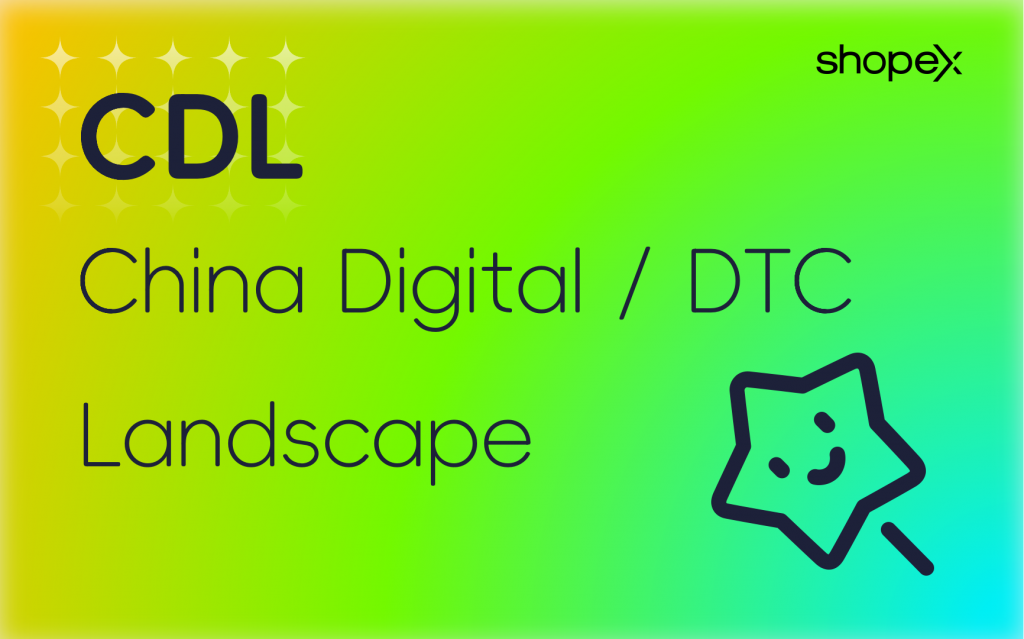
The “CDL Landscape” summarizes and analyzes the nine modules of “CONSUMER, GOODS, CHANNEL, RIGHTS, OWNERSHIP, INTERESTS, FINANCE, TAXATION, LAW” from three aspects: business operation, business collaboration, and business compliance.
It also analyzes the pain points and digital transformation needs of many internationally renowned brands when transitioning from B2B business to DTC business.
(1) Business Operation: The core essence of the DTC model lies in analyzing the comprehensive needs of consumers (people), products (goods), and the shopping experience (channel), establishing both online and offline touchpoints that directly reach consumers. By accurately and promptly meeting consumers’ personalized needs, a virtuous cycle of diffusive positive feedback can be achieved.
(2) Business Collaboration: DTC represents a transformation of business models and business concepts. It requires the collaborative expansion of all relevant internal departments of the brand and the external ecosystem of the brand, such as operation service providers and distributors, to be smoothly promoted. During the process of business collaboration, the distribution of interests and the redesign of the interest system should be fully considered.
(3) Business Compliance: For brand owners, the innovation and practice of business models need to be based on the foundation of legality and compliance. Under the increasingly diverse retail scenario models, brands should pay attention to the financial, legal, and tax compliance of new businesses.
ShopeX is the first service provider in the industry that fully integrates the nine modules involved in omnichannel retail business, namely “CONSUMER, GOODS, CHANNEL, RIGHTS, OWNERSHIP, INTERESTS, FINANCE, TAXATION, LAW”, to interpret the Chinese retail digital blueprint. This also reflects the rich experience and comprehensive understanding accumulated by ShopEx during its service to global leading brands.
ShopeX believes that all the above theories will ultimately focus on the capabilities of enterprises in two aspects, namely “omnichannel reach capabilities” and “digital capabilities”.
(1) Omnichannel Reach Capabilities: It means getting infinitely close to consumers through innovative business models. For example, the reach capabilities of online e-commerce platforms, the reach capabilities of brand official websites; the integrated online-offline reach capabilities of enterprises, the collaborative reach capabilities between brands and distributors; and the ability to establish regional instant reach.
(2) Digital Capabilities: It refers to enhancing the operation capabilities facing consumers through digital construction. For example, enterprises should have the ability to manage inventory across all channels, the ability to quickly fulfill supply chain orders, and the ability to monitor logistics for both online and offline scenarios as well as multiple stores and warehouses.
In addition, it also includes the ability to reallocate the interests of business roles and the ability to uniformly operate omnichannel members.
When conducting omnichannel retail business in China, it is necessary to comprehensively consider the nine modules of “CONSUMER, GOODS, CHANNEL, RIGHTS, OWNERSHIP, INTERESTS, FINANCE, TAXATION, LAW” to make business innovation and collaboration more efficient.

商派官方订阅号

领取相关报告
近期文章
- 2024—2025中国制造业数字化转型:破局、实践与未来展望——从政策到技术,解码企业转型路径
- 2024年「智慧零售全域数字化」榜单揭晓:麦当劳、周大福、奥乐齐、瑞幸咖啡、李宁等纷纷上榜
- 2025年中国高端家电品牌市场分析:海尔Haier、美的Midea、格力GREE三大本土品牌合计占据70%市场份额
- 德国百年高端电器品牌——美诺Miele与商派达成项目合作
- 深度剖析2025年中国汽车零部件市场:现状、趋势与投资机会
- 2025年制造行业移动端应用:数字化/智能化转型的核心战场与未来机遇
- 破局与重构:解码中国企业跨境出海「产品力、供应链、技术力和渠道力」四位一体新引擎
- 深度解析DTC模式:中国消费零售行业的渠道变革与营销体系转型


 沪公网安备 31010402000102号
沪公网安备 31010402000102号
 电子营业执照
电子营业执照